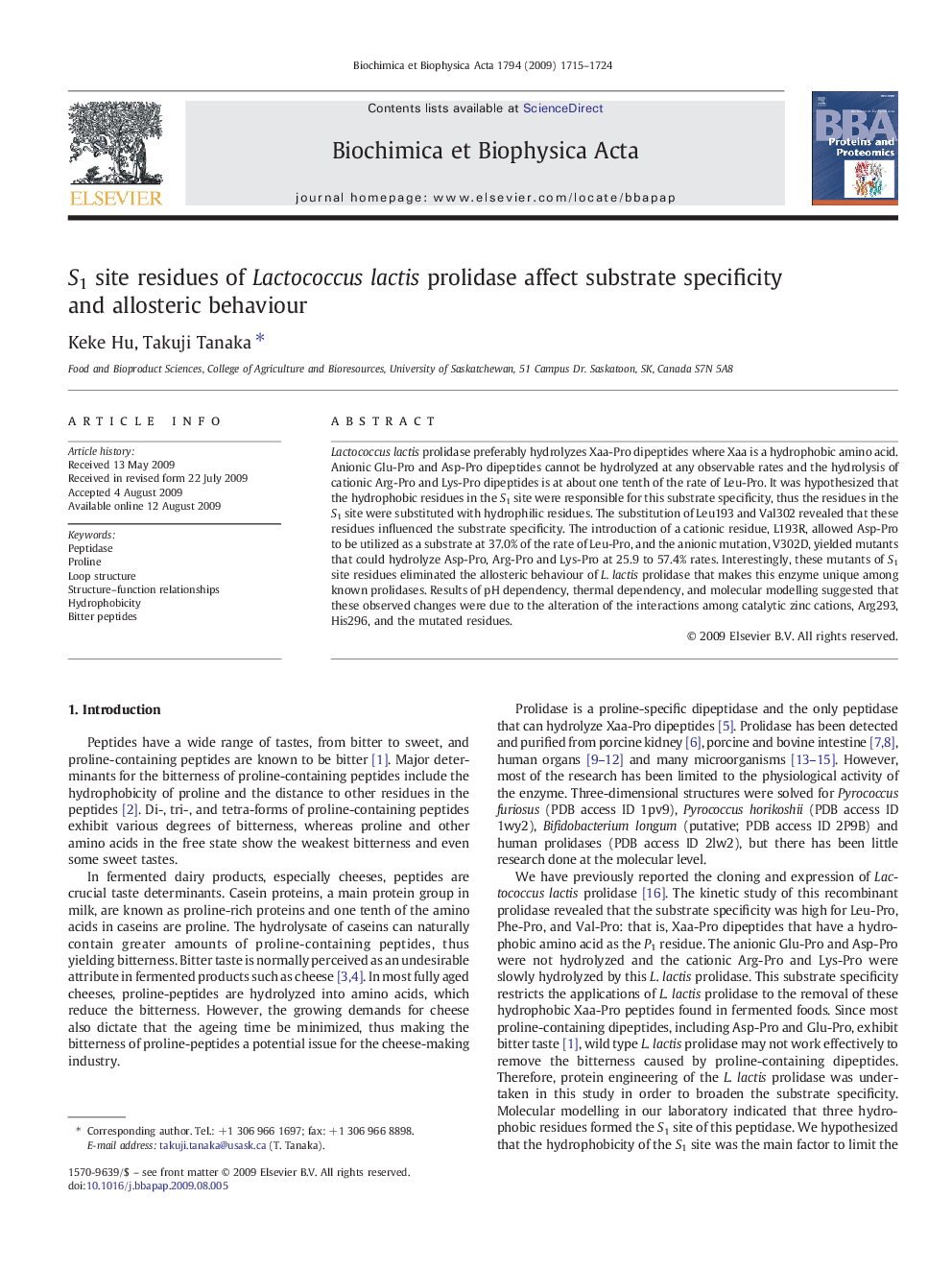| Article ID | Journal | Published Year | Pages | File Type |
|---|---|---|---|---|
| 1177929 | Biochimica et Biophysica Acta (BBA) - Proteins and Proteomics | 2009 | 10 Pages |
Lactococcus lactis prolidase preferably hydrolyzes Xaa-Pro dipeptides where Xaa is a hydrophobic amino acid. Anionic Glu-Pro and Asp-Pro dipeptides cannot be hydrolyzed at any observable rates and the hydrolysis of cationic Arg-Pro and Lys-Pro dipeptides is at about one tenth of the rate of Leu-Pro. It was hypothesized that the hydrophobic residues in the S1 site were responsible for this substrate specificity, thus the residues in the S1 site were substituted with hydrophilic residues. The substitution of Leu193 and Val302 revealed that these residues influenced the substrate specificity. The introduction of a cationic residue, L193R, allowed Asp-Pro to be utilized as a substrate at 37.0% of the rate of Leu-Pro, and the anionic mutation, V302D, yielded mutants that could hydrolyze Asp-Pro, Arg-Pro and Lys-Pro at 25.9 to 57.4% rates. Interestingly, these mutants of S1 site residues eliminated the allosteric behaviour of L. lactis prolidase that makes this enzyme unique among known prolidases. Results of pH dependency, thermal dependency, and molecular modelling suggested that these observed changes were due to the alteration of the interactions among catalytic zinc cations, Arg293, His296, and the mutated residues.
